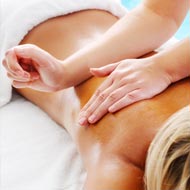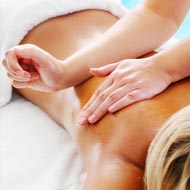- Orthopedic Massage Therapy
- Benefits of Orthopedic Massage
- Benefits of Magnetic Therapy
- Craniosacral Therapy
- Lomilomi Massage Therapy
- Thai Massage Therapy
- Therapeutic Massage
- Trigger Point Therapy
- Sports Massage Therapy
- Sports Massage Techniques
- Shiatsu Massage Therapy
- Shiatsu Foot Massage
- Shiatsu Facial Massage
- Shiatsu Back Massage
- Reflexology Therapy
- Reflexology Treatment
- Reflexology Foot Massage
- Amma Massage Therapy
- Baby Massage Therapy
- Benefits of Baby Massage
- Body Massage
- Benefits of Body Massage
- Deep Tissue Massage Therapy
- Pregnancy Massage Therapy
- Energy Healing Therapy
- Benefits of Energy Healing Therapy
- Myotherapy
- Benefits of Myotherapy
- Neuromuscular Massage Therapy
- Polarity Therapy
- Geriatric Massage Therapy
- Abdominal Massage
- Abdominal Massage Techniques
- Acupressure Massage
- Ayurvedic Massage
- Ayurvedic Head Massage
- Ayurvedic Face Massage
- Back Massage Techniques
- Benefits of Acupressure
- Benefits of Lymphatic Massage
- Common Forms of Hydrotherapy
- Esalen Massage
- Esalen massage technique
- Foot Massage
- Hand Massage
- Hand Reflexology
- Head Massage
- Holistic Massage
- Holistic Treatment
- Hydrotherapy
- Leg Massage
- Lymph Edema Treatment
- Lymphatic facial massage
- Lymphatic Massage
- Magnet Therapy
- Manual Lymph Drainage
- Neck Massage
- Pregnancy Massage
- Pregnancy Massage Benefits
- Acupressure Facial Massage
- Ayurvedic Foot Massage
- Ayurvedic Treatments
- Holistic Massage Therapy
- Holistic Therapeutic Massage
- Holistic Touch Massage
- Lymphatic Massage Techniques
- Ayurvedic Massage Techniques
- Ayurvedic Massage Therapy
- Foot Massage Equipment
- Frozen Shoulder Massage
- Hand Massage Techniques
- Scalp Massage Benefits
- Swedish Esalen Massage
- Aromatherapy Massage
- Acupressure Foot Massage
- Benefits of Aromatherapy
- Acupressure and Therapeutic Massage
- Aromatherapy Massage Oil
- Benefits of Zero Balancing Massage Therapy
- Benefits of Geriatric Massage
- Benefits of Lomi Lomi Massage Therapy
- Medical Massage Therapy
- Pregnancy Massage Techniques
- Touch Therapy Massage
- Shoulder Massage
- Scalp Massage
- Reflexology Massage
- Reiki Meditation
- Reiki Treatment
- Reflexology Massage Techniques
- Scalp Massage Techniques
- Ayurvedic Scalp Massage
- Scalp Massage Oil
- Leg Massage Equipments
- Shoulder Massage Techniques
- Benefits of Craniosacral Therapy
- Magnetic Treatment
- Benefits of Sports Massage Therapy
- Ashiatsu Massage
- Abhyanga Massage
- Advanced Therapeutic Massage
- Alternative Massage Therapy
- Back Massage Therapy
- Balinese Massage
- Balneotherapy
- Bowen Massage Therapy
- Bowen Therapy Technique
- Breath Therapy
- Champissage
- Colon Hydrotherapy
- Colon Hydrotherapy Benefits
- Connective Tissue Massage
- Craniosacral Therapy Techniques
- Cryotherapy
- Deep Muscle Massage
- Hakomi Therapy
- Kriya Massage
- La Stone Therapy
- Muscular Therapy
- Myofascial Trigger Point Therapy
- Naprapathy
- Phytotherapy
- Relaxation massage
- Head and Scalp Massage
- Leg Massage Techniques
- Spinal Therapy
- Swedish massage Techniques
- Swedish massage Therapy
- Types of Massage Therapy
- Water Massage
- Acrosage
- Acu Yoga
- Acupuncture Therapy
- Gyrotonic Pilates
- Head Massage Techniques
- Neck Massage Benefits
- Neck Massage Techniques
- Oncology Massage Therapy
- Acupuncture Treatment
- Belavi Facelift Massage
- Benefits of Acupuncture
- Chiropractic Massage
- Chiropractic Treatment
- Hoshino Therapy
- Applied Kinesiology
- Attunement
- Chakra Healing
- Japanese Massage Therapy
- Push Therapy
- Restoration Therapy
- SHEN Therapy
- Somatic Movement Therapy
- Structural Energetic Therapy
- Thalassotherapy
- Vibrational Healing Massage Therapy
- Vortex Healing
- Watsu Massage
- Zen Body Therapy
- Zero Balancing Massage Therapy
- Breast Massage Therapy
- Chinese Massage
- Esoteric Healing
- Color Therapy
- Colorpuncture
- Integrative Manual Therapy
- Jamu Massage
- Massotherapy
- Movement Therapy
- Myomassology
- Myopathic Muscular Therapy
- Ohashiatsu
- Reflective Therapy
- Pranic Healing
- Restorative Massage
- Onsen Technique
- Unified Field Therapy
- Zen Shiatsu
- Russian Massage
- Trauma Touch Therapy
- Trigger Point Myotherapy
- Healing Hands Massage
- Body Massage Therapy
- Benefits of Sports Massage
- Shiatsu Massage Chair
- Hot Oil Massage
- Acupuncture for Fertility
- Cupping Massage
- Chocolate Massage
- Oriental Massage Therapy
- Mobile Massage
- Remedial Massage Therapy
- Bamboo Massage
- Geriatric Massage Training
- Tao Massage
- Massage Balls
- Massage Table
- Panchakarma
- Asian Massage Therapy
- Yoga Massage
- Choosing Right Massage Chair
- Raindrop Massage Therapy
- Massage Therapist Salary
- Benefits of Massage Therapy
- Massage Therapy Techniques
- Massage Therapy Equipments
- Chair Massage
Rolfing Therapy
Do you suffer from stress or have a physically demanding job? Are you recovering from an accident or injury?
Do you suffer from constant aches and pain or poor health? If you answer "yes" to any of the above questions then Rolfing may be the best solution to your problems.
Invented in the 1930s and 40s by Dr. Ida Rolf, Rolfing developed as a technique that combined her interest in osteopathy, yoga, and massage therapy. Dr. Rolf believed that most health problems were a result of poor posture, faulty muscle tissue and compression of the internal organs. She then created a holistic system that manipulated the tissues of the body to change its movement and alignment. Originally known as Structural Integration, the nickname of Rolfing soon caught on.
The technique of Rolfing uses physical manipulation to loosen tight fascia of the body (scarred tissues that are bound together as a result of injury). Rolfing techniques are based on the theory that these fascial adhesions cause the muscles to stiffen and shorten and result in compression and damage to the internal organs, poor posture and emotional and physical tension. As the fascia loosen, the body aligns to its original state and muscle flexibility and movement is restored. The first step in Rolfing includes an examination of the body and fascial tissues to check for imbalances and to determine where the technique needs to be applied. The Rolfing practitioner will then manipulate and separate the fascia and muscles that have been bound together as a result of any trauma or injury. Finally, the therapist integrates the changes in the body to maximize its new potential.
Many people describe Rolfing as initially uncomfortable or painful. This is due to the strong manipulative movements of the therapist who uses his elbows, knuckles, and hands to massage deep into the muscle and tissues. People who suffer from cancer or inflammatory diseases should avoid Rolfing. It is also best to only choose a therapist who is certified and trained from one of the several hundred official Rolf Institutes of Structural Integration in the US.
Believers of Rolfing swear by the benefits of this holistic practice. Regular Rolfing therapy can help people by:
- Reducing breathing difficulties
- Improving flexibility
- Treating muscle pain and tension
- Re-aligning posture
- Increasing energy
- Offering pain relief and treating RSI or Repetitive Stress Injury
People who have undergone Rolfing claim an overall improvement in their health and lives. Mental stress and emotional tension disappear as the muscles in the body relax. As a result, Rolfing is used as a popular aid in the field of physiotherapy and psychotherapy. Studies show that Rolfing can improve the physical structure of a person and improve health over time. However, keep in mind that our bodies change over time and future injuries or accidents may require additional treatment. Rolfing is not a one-time solution to all your health problems but rather a therapeutic choice that can improve your life in the long-term.



